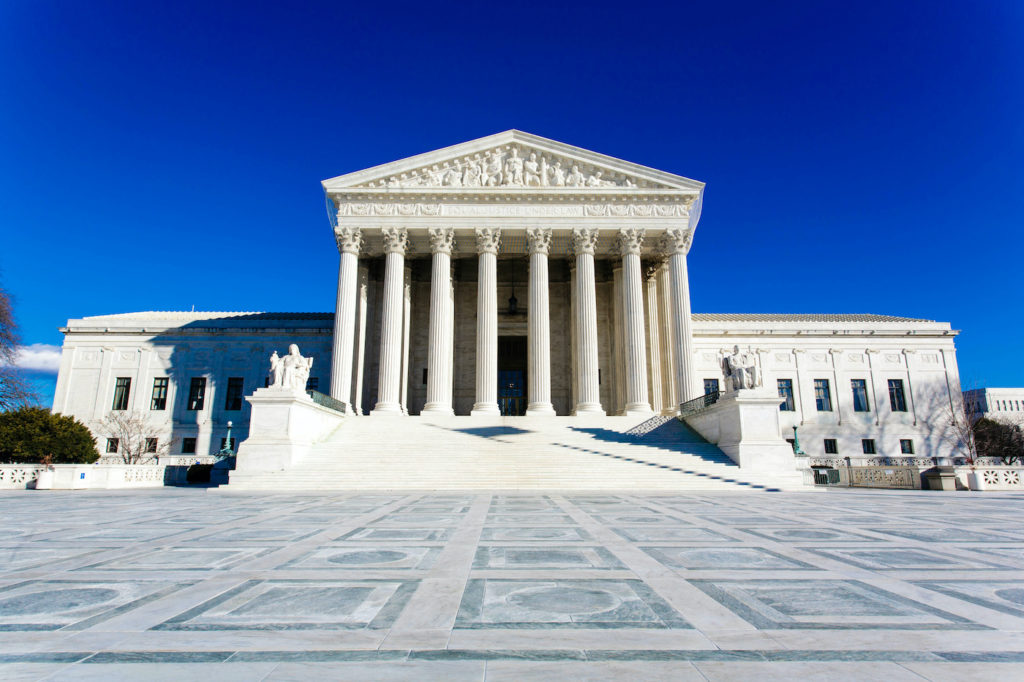In Dobbs v. Jackson Women’s Health Organization, the docketed Supreme Court case about Mississippi’s fifteen-week abortion ban, lawyers challenging the Mississippi law claim in their legal brief that the “common law permitted abortion up to a certain point in pregnancy, and many states maintained that common law tradition as of the late 1850s.” A friend-of-the-court brief stamped with the imprimatur of the American Historical Association and the Organization of American Historians makes much the same argument, insisting that “under the common law, a woman could terminate a pregnancy at her discretion prior to physically feeling the fetus move.”
The truth is nearly the opposite: common law judges always treated abortion as unlawful even if unindictable for evidentiary reasons. In the 1850s, the American Medical Association led a nationwide effort to translate common law rules about abortion into state statutes, often clarifying and strengthening criminal prohibitions in the process.
The only source that the lawyers for Jackson Women’s Health cite for their claim is Justice Blackmun’s opinion in Roe v. Wade, which in turn relied on the discredited scholarship of Cyril Means, a law professor who moonlighted as counsel to a major abortion rights advocacy group during the Roe litigation. The brief then directs the reader to consult generally “Historians Br.”—presumably, the brief by the professional historical associations that was not filed until a week after the respondent’s brief. This suggests a degree of coordination between the historians and Jackson Women’s Health that is telling but not surprising.
It is not surprising, because the history put forward in abortion litigation by advocates of abortion has never been about history. In the scholarship that originally underwrote Roe’s historical claims, Cyril Means made what he acknowledged were two utterly novel historical claims at the time: (1) that protecting unborn human life was not the purpose of state anti-abortion statutes in the nineteenth century and (2) abortion was a protected common-law liberty at the time of the American founding. Means claimed that he had revealed “for the first time” the real purpose of anti-abortion statutes, and that he was the first scholar to recover the story of a purported traditional common-law liberty to abort that had been “untold now for a nearly a century.”
Start your day with Public Discourse
Sign up and get our daily essays sent straight to your inbox.The history put forward in abortion litigation by advocates of abortion has never been about history.
“The Guise of Impartial Scholarship”
Those claims buttressing the historical section in Roe and subsequent historians’ briefs were not even close to a good faith attempt at historical interpretation. One of the law students helping with Jane Roe’s case acknowledged as much at the time. In a 1971 memo to one of the principal attorneys working on the case, David Tunderman wrote that Means’s “conclusions sometimes strain credulity” but nonetheless concluded that
where the important thing is to win the case no matter how, however, I suppose I agree with Means’s technique: begin with a scholarly attempt at historical research; if it doesn’t work, fudge it as necessary; write a piece so long that others will read only your introduction and conclusion; then keep citing it until courts begin picking it up. This preserves the guise of impartial scholarship while advancing the proper ideological goals.
Consider one illustrative example of how Means fudged things to advance the proper ideological goals. For evidence of his claim that the framers of the Constitution “did not think that a foetus was a person,” Means insisted that one “could do no better than to consult” Samuel Farr’s Elements of Medical Jurisprudence, first published in 1787, where the eighteenth-century English physician had written that an early embryo is “not a human creature” and that “were a child to be born in the shape which it presents in the first stages of pregnancy, it would be a monster indeed, as great as any which was ever brought to life.” After citing this, Means wrote that he hoped when the “question is finally argued before the Supreme Court,” the “refreshing simplicity” of Farr’s description would counter any “sentimental romanticism” about “human beings in the early stages of pregnancy.”
Yet Farr’s description of the embryo as a monster occurs within a technical legal discussion of disabled adults (whom he also called monsters), and he was referring to the appearance rather than the species of the embryo when he wrote that it was not a human creature. Just a few pages later, Farr directly took up the question of when a new human life begins, answering that “life must certainly begin after conception and nothing but the arbitrary forms of human institutions can make it otherwise.” He then insisted, without equivocation,
that abortions, or the destruction of those unborn embryos which were never brought into the world: and indeed as such beings might live, and become of use to mankind, and as they have supposed indeed from the time of conception, to be living animated beings, there is no doubt but the destruction of them ought to be considered a capital crime.
If one could do no better than this to prove Means’s point, it is because Means didn’t have a point to prove but an ideological axe to grind. The same can be said for the professional historians who continue to put out misleading, ambiguous, and even fraudulent historical claims that are simply laundered ideas taken from Means’s dubious scholarship and Blackmun’s equally dubious opinion in Roe v. Wade. The brief filed by the American Historical Association and the Organization of American Historians, for example, recycles the central historical claims that undergirded Roe v. Wade—namely, that common law permitted abortion in early pregnancy and possibly without limitation, and that mid-nineteenth-century abortion statutes did not recognize the moral status or personhood of the unborn human being early in pregnancy—and concludes that those claims “were accurate in Roe and remain so today.”
Joseph Dellapenna shows that the historical record points strongly to the conclusion that “abortion was a common-law crime from the earliest recorded days, and the common law was followed and codified in the states and territories in order to protect the life of the unborn child.”
The Definitive Debunking of Cyril Means’s Fake History
If we insist that some idea or claim has been debunked or discredited, C. S. Lewis maintained, we should also know “by whom, where, and how conclusively.” When it comes to setting the record straight on abortion history, the most exhaustive source is Villanova Law Professor Emeritus Joseph Dellapenna’s 2006 book Dispelling the Myths of Abortion History. At over one thousand pages, it is the most comprehensive treatment of the topic to date.
To summarize Dellapenna’s argument as it pertains to the Dobbs case, however, one might simply turn from his 2006 tome to the brief he filed in this case. (As of this writing, the link to Dellapenna’s brief on the Supreme Court website has stopped working; you can access a PDF here.) “The majority in Roe v. Wade,” Dellapenna writes, “influenced by deliberately distorted presentations of the history of abortion laws that have also been pressed upon the court in subsequent cases, erroneously concluded that abortion was not a common-law crime.” Yet, as Dellapenna shows in detail, the historical record points strongly to the conclusion that “abortion was a common-law crime from the earliest recorded days, and the common law was followed and codified in the states and territories in order to protect the life of the unborn child.”
The record is especially clear that the overriding purpose of these mid-nineteenth-century state statutes codifying the common law was to protect the life of the unborn child from unjustified violence. The legislature in Ohio that voted to ratify the Fourteenth Amendment, for example, also voted in the same session to pass a restrictive abortion statute that remained operative until 1973. Along with the proposed statute, the legislative committee tasked with drafting the law also returned a report that described abortion as “child-murder” and noted that the best available scientific evidence showed that a “foetus in utero is alive from the very moment of conception.” To “extinguish the first spark of life,” the committee maintained, quoting Thomas Percival’s 1803 Medical Ethics, “is a crime of the same nature, both against our Maker and society, as to destroy an infant, a child, or a man.”
Our constitutional arguments continue to be informed by the stories we tell about our history, and the practice of historians brandishing professional credentials in legal briefs for major abortion cases goes back to the 1989 case of Webster v. Reproductive Health Services. The counsel of record for the notorious historians’ brief in Webster later acknowledged the scholars’ “serious deficiencies as truth-tellers.” Those deficiencies were even more remarkable given that the central claims of the brief contradicted some of the signatories’ own published scholarship. One of the signatories—who knowingly signed a brief that made claims he did not think were true—nonetheless defended his decision to Gerard Bradley in terms of political activism rather than scholarship.
The law office history that buttressed Justice Blackmun’s opinion in Roe v. Wade was wrong at the time and it is wrong today. That remains true, even if the two leading organizations of professional historians have shamelessly signed on, yet again, to the project of constructing a fictional abortion history that will advance what elite academic opinion deemed long ago to be the proper ideological goals.














